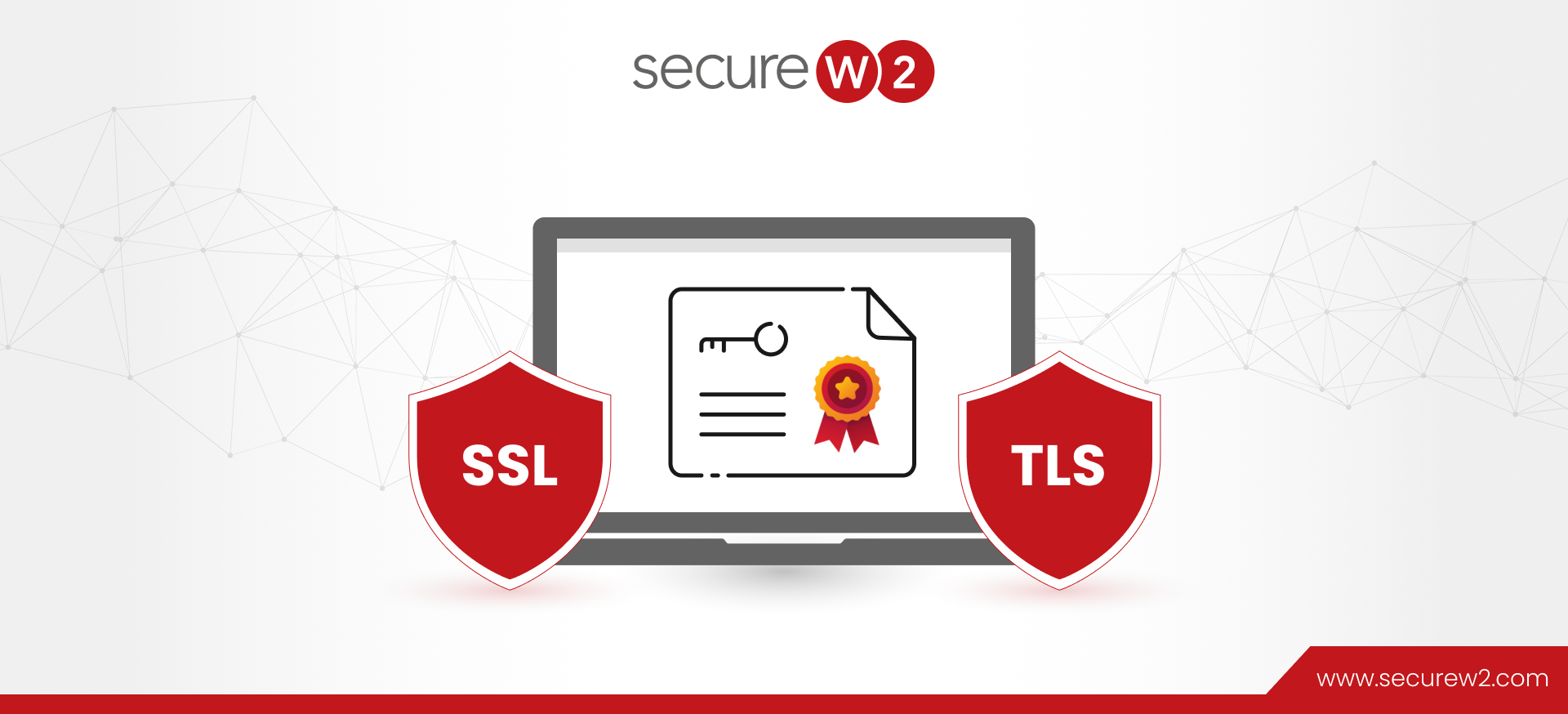One of the most important security precautions for any customer-facing organization is to ensure data sent between the two parties is protected from outside attacks. Without data integrity, customers or data recipients cannot feel secure because their information could be at risk. Through the use of SSL and TLS certificates, you can guarantee that data sent over-the-air is protected, but which between these certificate types is most effective for your particular organization?
What are SSL Certificates?
At a basic level, Secure Sockets Layer (SSL) certificates’ main purpose is to bind a cryptographic key to an organization’s web server to protect data transfers when someone accesses that server. It works by creating a secure connection between the two parties that allows for data to pass between the two without outside influence.
This secure connection between web browser and server is used for a variety of communications: credit card transactions, data transfers, securing websites, and more. The most common occurrence of SSL certificates that users see on a daily basis is the transfer protocol HTTP. If you access a link starting with HTTPS, it indicates that the site is secured by an SSL certificate. Without a certificate, HTTP is unsecured.
Functionality of SSL Certificates
SSL certificates utilize public key cryptography to encrypt and protect messages/data sent between the browser and server. When a user connects to a website, the server sends its SSL certificate. The user’s device then verifies that the certificate is trusted by checking it against Certificate Authorities (CA) that are inherently trusted by the device.
Through this process, the identities of both parties involved are confirmed so each feels secure that their data is being sent to the right place. Once this is established, the data is encrypted and sent securely.
Distribution of SSL Certificates
To facilitate these secure communications, you need to acquire SSL certificates that are distributed from a publicly recognized and trusted CA. Without a trusted certificate, a user accessing your website will receive an error message before being directed to the site. The error message will indicate that your certificate is not trusted, which is an immediate red flag for most users and can be extremely detrimental for an organization, especially an e-commerce website.
There are a number of trusted SSL certificate providers, including companies like Digicert, GlobalSign, and GeoTrust.
What Are TLS Certificates?
Transport Layer Security (TLS) certificates are simply an upgraded version of SSL certificates. While they can still be effective, SSL certificates are a first of its kind cryptographic protocol and are becoming less effective in the modern networking environment (which we will explore more later in this article).
TLS certificates perform the same operation as SSL certificates, but with a more secure and up to date version. They establish a secure connection between two parties, verify their identity using public key cryptography, and prevent the interception of data by outside attackers.
How TLS Improves SSL
As stated before, SSL and TLS perform the same operations and can both still be effective. But security conscious organizations are more likely to choose the latest version. TLS offers significant advantages over SSL that organizations should consider when designing their system.
Cipher Suites
TLS and SSL offer support for different cipher suites. SSL supports Fortezza cipher suite, while TLS opts to support suites with better standardization processes. Some of these suites include RC4, Triple DES, AES, and IDEA.
Record Protocol
SSL uses Message Authentication Code (MAC) to verify encrypted data between both parties. TLS uses HMAC, a hash-based message authentication code that is more secure and efficient.
Handshake Process
The handshake process to confirm the identity of the server and browser is facilitated by a hash. In SSL, the hash calculation also includes the master secret and pad, while TLS calculates the hash over the handshake message.
Message Authentication
Authenticating a message with SSL combines key identity details and the application data when necessary, while TLS relies on HMAC to protect and confirm the identity and validity of the messages sent.
The function of TLS and SSL are the same, but how they accomplish the task of protecting communication is where the details become important and create a significant difference. But as with many technologies, SSL is outdated and it’s recommended to protect your users with the best technology available.
Certificate distribution is not the simplest task and requires an involved process to configure. The best option to avoid misconfiguration is to utilize a certificate vendor that is known for efficient and accurate certificate distribution. SecureW2’s PKI services allow you to generate your own Root and Intermediate Certificate Authorities, so you can enable your Firewall to inspect the traffic it needs. Check out our price page to see if our certificate distribution solutions can be the answer your organization is looking for.



